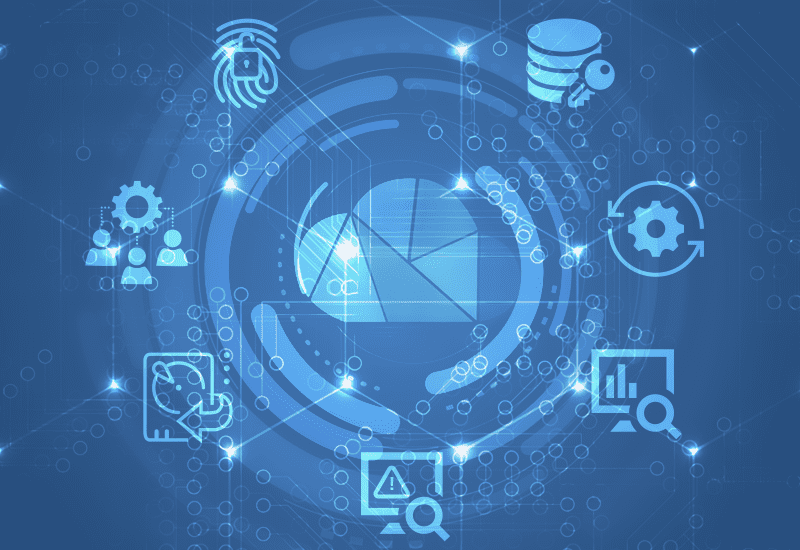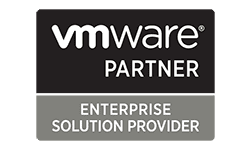Cloud Data Security Best Practices
Knowing What to Look for in Cloud Security Helps Organizations Thrive
Editorial Team
6 Min Read

The cloud enables businesses to improve their efficiency, increase profits, and work toward digital transformation. It also comes with unique security challenges.
Following best practices can help organizations improve their cybersecurity postures and protect themselves against evolving threats.
Understanding Cloud Infrastructure
Cloud computing refers to services delivered on demand over the internet, usually with a pay-as-you-go (PAYG) pricing model. For example, a software-as-a-service (SaaS) customer management application is a type of cloud computing service. Cloud infrastructure encompasses all the underlying hardware and software that powers cloud computing services, such as:
- Networking equipment
- Virtual and physical data storage
- Servers
- Abstraction layers
- Virtualization technologies
- Deployment software
Because so much of today’s world is moving to the cloud, securing this infrastructure is critical for maintaining business continuity and protecting organizations’ reputations.
Advantages and Challenges of Cloud Infrastructure
Implementing cloud infrastructure is like any other IT decision. It comes with unique benefits and challenges. Some of the advantages of using cloud infrastructure include:
- Agility: The cloud can rapidly expand or shrink as a company’s storage and computing needs change.
- Cost Savings: The cloud helps lower IT costs by reducing the need to purchase and maintain expensive legacy infrastructure. Plus, managed cloud services enable midsize organizations to save money on labor by eliminating the need to maintain a large IT department.
- Flexibility: Because the cloud is an internet-based technology, authorized users can access cloud resources from anywhere on any internet-connected device. This flexibility opens organizations up to new possibilities, such as remote and hybrid work.
Some potential challenges include:
- A Lack of Visibility: One of the most important elements to look for in a cloud provider is the amount of control the customer has over their infrastructure. Some providers have full ownership over the technology, so customers lose visibility into their cloud resources.
- Complex Environments: More organizations are implementing complex multiple-cloud or hybrid environments, which makes finding the right cybersecurity tools a challenge.
- Large Attack Surface: While cloud infrastructure expands the potential for IT innovation, it also opens new endpoints for cybercriminals to attack. Shadow IT, public Wi-Fi networks, and employees’ personal devices pose potential vulnerabilities.
Best Practices for Cloud Security
Explore some cloud security best practices to consider implementing in your organization.

Implement Strong Authentication and Access Controls
Strategies like multifactor authentication (MFA) and role-based access control (RBAC) can shield cloud infrastructure from the inside and outside.
MFA protects cloud infrastructure by requiring users to provide at least two forms of identification to log in. For example, a user may input a username and password for the first factor and respond to a push notification on their smartphone for the second.
RBAC limits the type of access employees have to network resources — employees who don’t need access to sensitive data and applications don’t have it, reducing the risk of insider threats.

Encrypt Data in Transit and at Rest
Whether data is actively moving between endpoints or passively occupying storage space, companies must take precautions to protect it.
Encryption scrambles data into nonsense code using a cryptographic algorithm. If a malicious actor were to gain possession of encrypted financial documents, they wouldn’t be able to read them without taking possession of the decryption key as well.
Secure socket layer and transport layer security (SSL/TLS) certificates are two forms of encryption that establish a secure connection between the user’s device and the website they are accessing.

Regularly Patch and Update Systems
Patching and updating cloud infrastructure and security solutions is essential for protecting an organization’s system from external cyberattacks. The EternalBlue exploit for Microsoft Windows is an excellent case study. In 2017, cybercriminals launched a massive ransomware attack that exploited the EternalBlue vulnerability. Organizations that failed to install the patch before the attack lost access to their data. Keeping up with system updates is critical for preventing serious reputational and financial losses.

Monitor for and Log Security Events
Employee monitoring is one of the best ways to detect early signs of suspicious insider activity, including malicious behavior.
A security information and event management (SIEM) solution helps organizations recognize and address potential threats and vulnerabilities early on, which is essential for minimizing damage.
An intrusion detection system (IDS) detects suspicious network activity and alerts the appropriate parties when a threat appears. An intrusion prevention system (IPS) is like an IDS, though it is slightly more advanced. Once an IPS detects a threat, it automatically executes the appropriate action to eliminate the threat. For example, it might report a threat like an IDS would, or it might restart the connection to remove would-be attackers.

Conduct Vulnerability Assessments and Penetration Testing
Conducting vulnerability assessments helps establish a cybersecurity baseline so you know where your organization needs better security. Penetration testing, sometimes called “pen testing,” is one type of assessment that involves conducting simulated attacks against a cloud system to discover exploitable vulnerabilities. After running the test, participants review their findings and determine which tools and techniques would be beneficial.

Implement Backup and Disaster Recovery Plans
Regardless of the industry, any amount of downtime can result in serious financial and reputational losses for organizations of any size. Having a disaster recovery plan in place helps organizations quickly resume operations after cybersecurity incidents. Disaster recovery usually involves backing up company data and outlining an incident response plan to follow if and when an incident occurs.
Automated, cloud-based backup software is an excellent tool to have in a disaster recovery plan because it runs backups without interrupting day-to-day operations.

Require Employee Training and Awareness Programs
Human error is one of the most common vulnerabilities cybercriminals can exploit to get into a cloud network. That’s why phishing is such a concerning threat — anyone can fall victim to it if they aren’t aware of the signs.
Investing in employee training and security awareness programs is key to educating your employees on the signs of an attack so they know what steps to take in the event of a security incident.
Cloud Infrastructure Security Threats
Here are some of the most common cloud computer security threats organizations face.
Insider Activity
Users inside your network can unintentionally enable attacks by neglecting important security measures such as strong passwords or proper cloud configuration.
There’s also the possibility that an insider to your network could have malicious intentions. The challenge in dealing with threats from insiders is that their activity often appears to be innocuous — unless they are exhibiting blatantly abnormal behavior, it can be difficult to detect malicious activity until it is too late.
Social Engineering
According to Verizon’s 2023 Data Breach Investigations Report, the human element plays a major role in 74% of security incidents. That includes social engineering attacks, such as phishing and pretexting.
Social engineering is a technique cybercriminals use to trick victims into divulging sensitive information or completing compromising actions. For example, an employee might receive an email asking them to click a link that will reset their password. The link redirects to a spammy website that automatically downloads malware onto the user’s device.
Cloud Infrastructure Security Solutions
Knowing what to look for in cloud security solutions is important for choosing the right tools to address each type of threat. Partnering with a reliable managed services provider can help companies improve their security posture without exceeding their technology budgets.
At GDC, we strive to provide comprehensive IT security and management services for companies of all sizes. Our security threat management (STM) solutions monitor cloud systems for threats and automatically eliminate them if necessary, minimizing losses and ensuring business continuity.
Secure Your Cloud Infrastructure with GDC IT Solutions
Through our IT consulting services, we can help your organization determine its strengths and weaknesses in adhering to cloud application security best practices. You can rely on us to provide excellent service that meets industry standards.
Contact us today to discuss your business’s cloud infrastructure security needs with one of our skilled experts.




